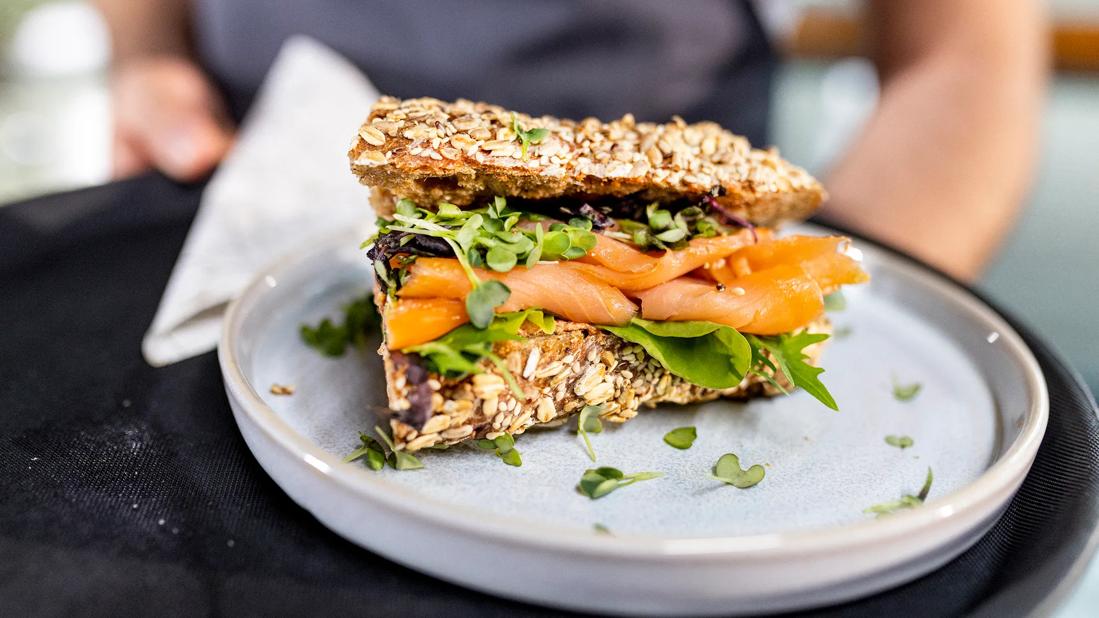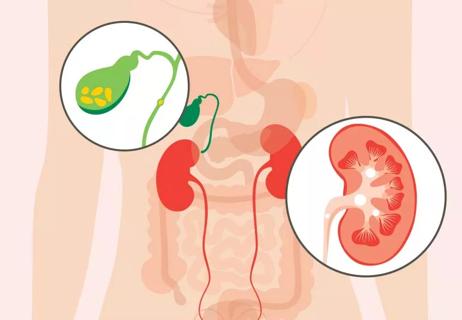A low-fat, high-fiber diet can help prevent gallbladder attacks and keep you pain-free

If you have gallbladder disease, you may feel eager to find lifestyle habits that will help you avoid bouts of gallbladder pain. Well, there’s good news: Adapting your diet can go a long way.
Advertisement
Cleveland Clinic is a non-profit academic medical center. Advertising on our site helps support our mission. We do not endorse non-Cleveland Clinic products or services. Policy
“Avoiding high-fat foods and eating lots of nutritious foods, like fruits, vegetables and whole grains, helps strengthen your gut microbiome and lower your chances of having a gallbladder attack,” says registered dietitian Beth Czerwony, RD, LD.
Certain dietary factors, like eating a lot of saturated fat and not enough fiber, raise your risk of gallbladder issues. When you’re trying to avoid gallbladder pain, the opposite is true, so to speak.
“If you have gallbladder issues, it’s best to follow a diet that’s low in fat and high in fiber,” Czerwony says. “There’s no guarantee against future gallbladder attacks, but it can do a lot for prevention.”
It all comes down to the way your gallbladder works. This small, purse-like organ, located just beneath your liver, holds digestive fluid called bile. Your liver makes bile to help your body break down fats, which is an important part of the digestion process. But unfortunately, gallstones and something called “gallbladder sludge” (a mix of cholesterol, calcium, bilirubin and other compounds) can collect in your gallbladder, too.
“When bile starts moving, these gallstones and sludge can start moving, too,” Czerwony explains. “Depending on how active the bile is, you could pass a gallstone. That can lead to a gallbladder attack, a brief but serious bout of pain after eating.”
Advertisement
But cultivating a healthy gut through the foods you eat (and the ones you avoid) can help prevent that.
“If you already have gallstones, they’re not going to be reabsorbed; they’re going to stick around,” she clarifies. “But if your bile isn’t particularly active, you don't have to worry as much about having a gallbladder attack.”
Avoiding or scaling back on certain types of food can lessen the likelihood of gallbladder pain. Minimizing saturated fats and refined carbohydrates is key.
“The less saturated fat you consume, the less bile your body needs to release to digest it,” Czerwony explains. “The less bile you release, the less likely you are to experience a gallbladder attack.”
Refined carbohydrates (aka simple carbohydrates) are highly processed and stripped of their fiber. Cutting back on sugary foods and foods made with white flour, in particular, may help prevent gallstones from forming.
Avoid or scale back on foods like:
There’s no precise gallstones diet. But as you cut saturated fats and refined carbs from your diet, work on incorporating healthy swaps that are lower in fat and higher in fiber.
“No specific food will improve your gallbladder health,” Czerwony reiterates, “but it’s important to eat a healthy, balanced diet overall, with a focus on how much fat and fiber you consume.”
Focus on these foods and categories:
Advertisement
Noticing a theme here? Eating for gallbladder health is largely about making healthy swaps. If, for example, you’re looking for a good breakfast for gallbladder problems, ditch the bacon and bagels and instead turn to options like Greek yogurt, whole-wheat toast, scrambled egg whites and smoothies.
But we get it: Figuring out the right swaps can be tough — and incorporating them into your everyday life can be even tougher.
“I always recommend talking to a dietitian, who can help you get a better idea of what you’re eating that could be affecting your gallbladder,” Czerwony advises. “They can help you figure out where to make swaps that can help.”
Two popular styles of healthy eating may help lower your risk of gallstone pain:
Importantly, both eating styles focus on lifestyle choices, not risky, unsustainable fad dieting practices.
“You won’t find strict, aggressive, restrictive food rules with the Mediterranean or DASH diets,” Czerwony notes. “Just a lot of encouragement and guidance to eat healthy, whole, nutritious foods that can foster better overall health.”
Advertisement
Everyone’s dietary triggers are slightly different, and not every food will affect your gallbladder the way it affects someone else’s.
“Starting a food journal can allow you to see if certain foods trigger you,” Czerwony recommends. “If you eat something and it gives you a gallbladder attack, that information will help you start to understand what you should stay away from.”
She reiterates that this is where a dietitian can be especially helpful.
“A dietitian can help you rework your diet for improved gallbladder health,” she says. “But if you continue to experience issues, it may be time to talk to your healthcare provider about gallbladder removal.”
Advertisement
Learn more about our editorial process.
Advertisement

One is related to your urinary system, while the other is related to your digestive system

Dairy, wheat, seafood, nuts and other foods may trigger inflammation

People with an inflamed esophagus may also have other conditions that cause a nagging, persistent cough

You have plenty of options to fill your belly, but caution is required when preparing meals

The conditions have similar symptoms, but are very different

Your body naturally produces the protein that’s essential for breaking down and digesting food

Nausea, fullness, heartburn and unexplained weight loss may signal that something is going on with your GI system

Choose foods that are low in fiber and easy to chew and swallow

Babies can get congested easily, but you can calm their cough by keeping them hydrated, using nasal drops and running a humidifier

Weight loss may cause loose, sagging skin and muscle loss to your rear

Several conditions, like vitiligo and fungal infection, can cause a loss of pigmentation, leading to white spots or patches on your skin